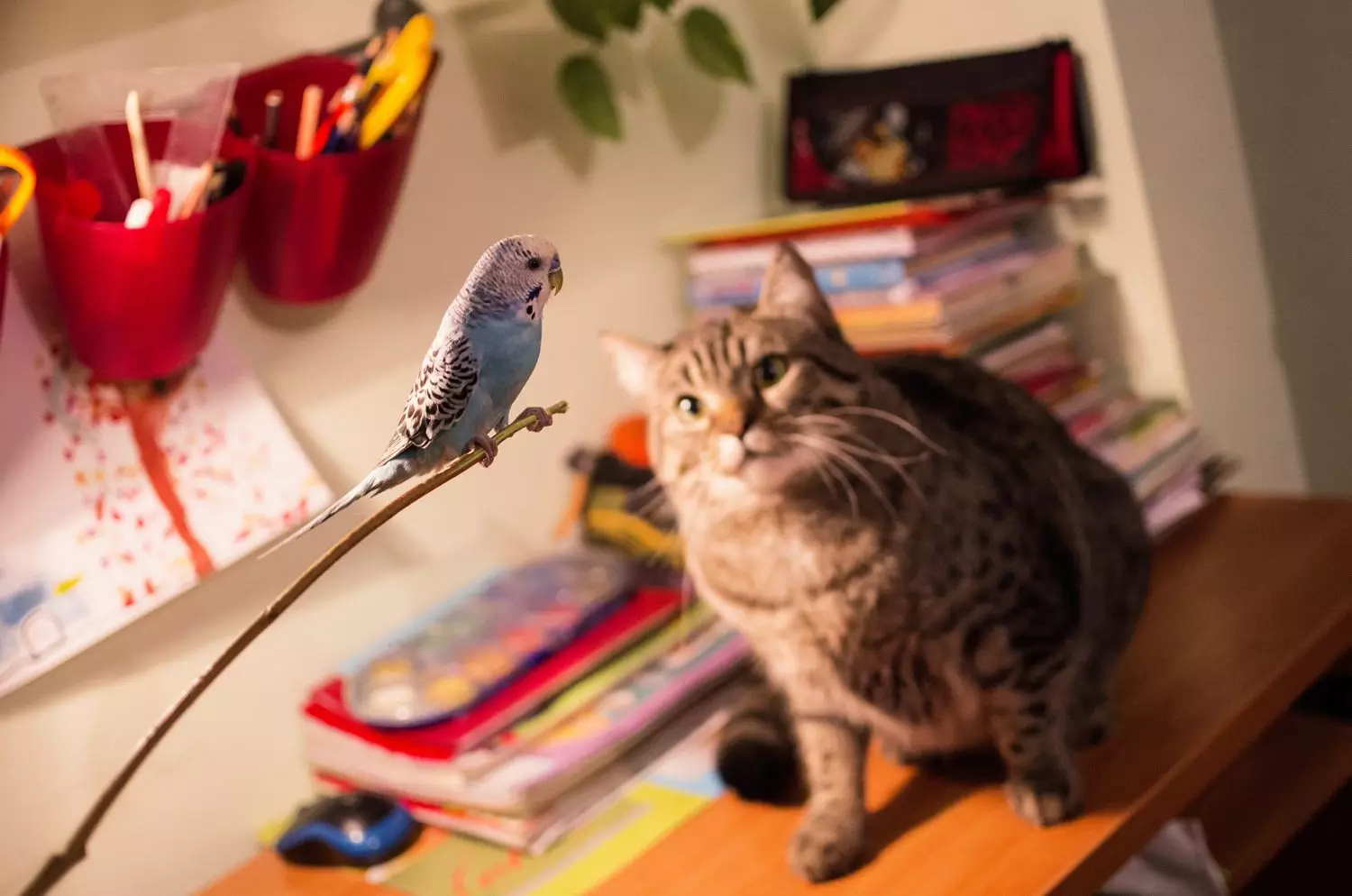The relationship between cats and birds is often fraught with tension due to their opposing roles in nature; cats are natural predators, while birds are instinctively prey. This poses a significant challenge for pet owners who wish to bring these two distinct creatures under one roof. While it is indeed possible for cats and birds to coexist peacefully, it requires careful planning, keen observation, and a keen understanding of each animal’s behavior.
Cats are inherently hunters, driven by instincts honed over millennia. Even domesticated cats exhibit a strong desire to stalk and capture small animals, including birds. This instinctual behavior is not merely a playful diversion; it is a fundamental aspect of feline nature, and it can result in dire consequences for pet birds.
On the other hand, birds are instinctually wired to flee from potential threats. They possess acute senses that make them highly aware of their surroundings, enabling them to detect predators like cats. Birds often respond to perceived threats by retreating or flying away. This instinct serves as an essential survival mechanism but may contribute to stress when they coexist with cats. The disparity between these natural instincts emphasizes the need for careful management to ensure both species can live together safely.
One crucial step in fostering a harmonious environment is to evaluate the personalities of your pets. Not all cats treat birds as prey; some may exhibit indifference or even curiosity without any aggressive intention. Conversely, other cats might view birds as potential playthings or meals. Understanding these individual traits is paramount for establishing a safe coexistence.
For instance, a shy cat may show fear towards a bird, while an overly energetic cat might have a more playful but dangerous interest in the bird. Similarly, the temperament of the bird matters. Some species are more daring and may challenge the cat, while others are easily frightened and may remain in a constant state of stress.
Environmental Management: Creating Safe Spaces
To facilitate coexistence, a significant priority must be securing your bird’s habitat. A sturdy, well-constructed cage or aviary is essential for protecting your feathered friend from curious paws. Ensure that the cage is securely locked and placed in an area that is difficult for the cat to access. Using carabiners to secure the door can prevent any accidental openings that could put the bird at risk.
Additionally, consider positioning the birdcage in a room that the cat cannot enter. This not only limits the cat’s access to the bird but also provides a secure environment that minimizes stress for the bird, who may feel constantly watched by its predator.
Behavioral Introductions: A Gradual Process
Introducing the two pets should be a slow and measured process. Start by allowing the cat and bird to observe each other from a safe distance. This initial phase helps both animals to acclimate to each other’s presence without feeling threatened.
Once both pets appear comfortable and relaxed, you can gradually reduce the distance between them. Be attentive to their body language; any signs of distress should be taken seriously, and the introduction should be adjusted accordingly. In situations where the cat displays signs of aggressive behavior, it may be necessary to halt the introduction and give both animals more time to adapt to the idea of cohabitating.
Bringing the bird out of its cage can be a riskier step, but if approached cautiously, it can open pathways for interaction and mutual understanding. If you decide to take this leap, ensure that the cat is securely restrained, possibly in another room, to prevent any unwanted incidents.
Monitoring Interactions: A Continuous Effort
Even after taking the necessary precautions, it’s critical to keep a watchful eye on interactions between your pets. Cats are unpredictable, and their instinctual behaviors can kick in at any moment. Monitor their behavior closely, ensuring that the bird feels secure and that the cat remains calm.
Creating a harmonious environment for cats and birds is undoubtedly a challenging endeavor, but it can lead to a rewarding relationship between pets if approached thoughtfully. Understanding their natural instincts, assessing their personalities, and creating a secure living environment are essential steps toward a peaceful coexistence. While it may require extra effort and vigilance on the part of the owner, the bond that can form between these two distinct creatures can be both fascinating and fulfilling.

